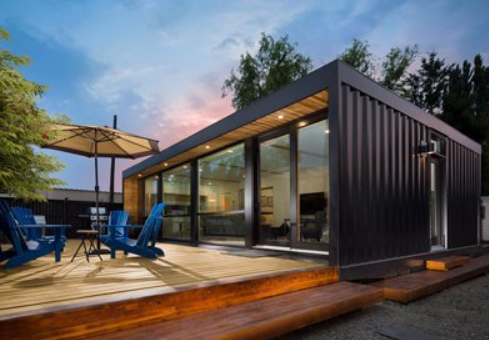
Recent research by Roof Stores has outlined eco-house designs to help property buyers find their next eco-friendly housing while reducing their carbon footprint
According to Roof Stores, private homes are estimated to be responsible for about one fifth to one-fourth of global carbon dioxide emissions.
As a result, eco-friendly construction or green building is becoming more and more of a necessity.
In order to find the best types of alternative housing, Roof Stores graded the options on eco-friendliness, practicality, build time and energy saving.
This concise guide to the most popular eco-designs weigh up the pro’s and con’s of each as well as their projected costs.
Alternative Housing
1. Earthship
Made mostly from natural and upcycled materials, the ‘Earthship’ is a prefabricated construction package.
The build uses thermo-solar heating and cooling, keeping you warm in the winters and cool in the summers and even contains a self-contained sewage treatment.
Models start from $20,000, however, if it is not built yourself, it can be quite costly to construct.
Scoring two out of five available stars on practicality, the ‘Earthship’ scores highly in other areas, bolstering a strong five out of five for build time and energy bill saving capabilities.
2. Earth-Sheltered
Completely surrounded by their natural environments, earth-sheltered homes are often found tucked away in the countrysides or in other scenic green areas.
Ranging from earth berming to underground / fully recessed construction and in-hill builds, the homes seamlessly blend into the earth around them.
Notably, a major drawback for these kinds of homes is the lack of natural sunlight.
Despite this, earth-sheltered homes are great energy savers and have little to no utility bills.
3. Prefabricated
Manufactured away from site, modular and panelised homes can be built in half the construction time of a traditional build.
Usually made from concrete, steel or wood most prefabricated homes are resistant to extreme weather conditions and produce less wastage.
4. Shipping Container
As the name suggests, these builds use upcycled and disused shipping containers.
Despite great affordability prospects with the average container starting at around $1800, the lowest scoring option of the bunch falls down on it’s shape and space limitations.
5. Tiny House
Last but not by means least, the tiny house mainly made from wood is an ideal mobile option which uses less building materials than other builds.
Its ability to be powered off solar and wind resources means that it scores a respectable four out of five stars for energy saving.













